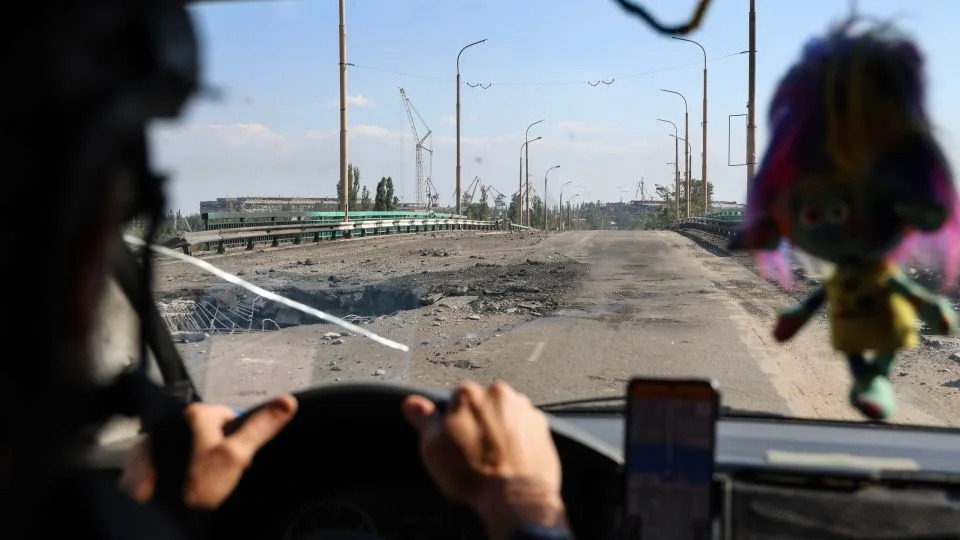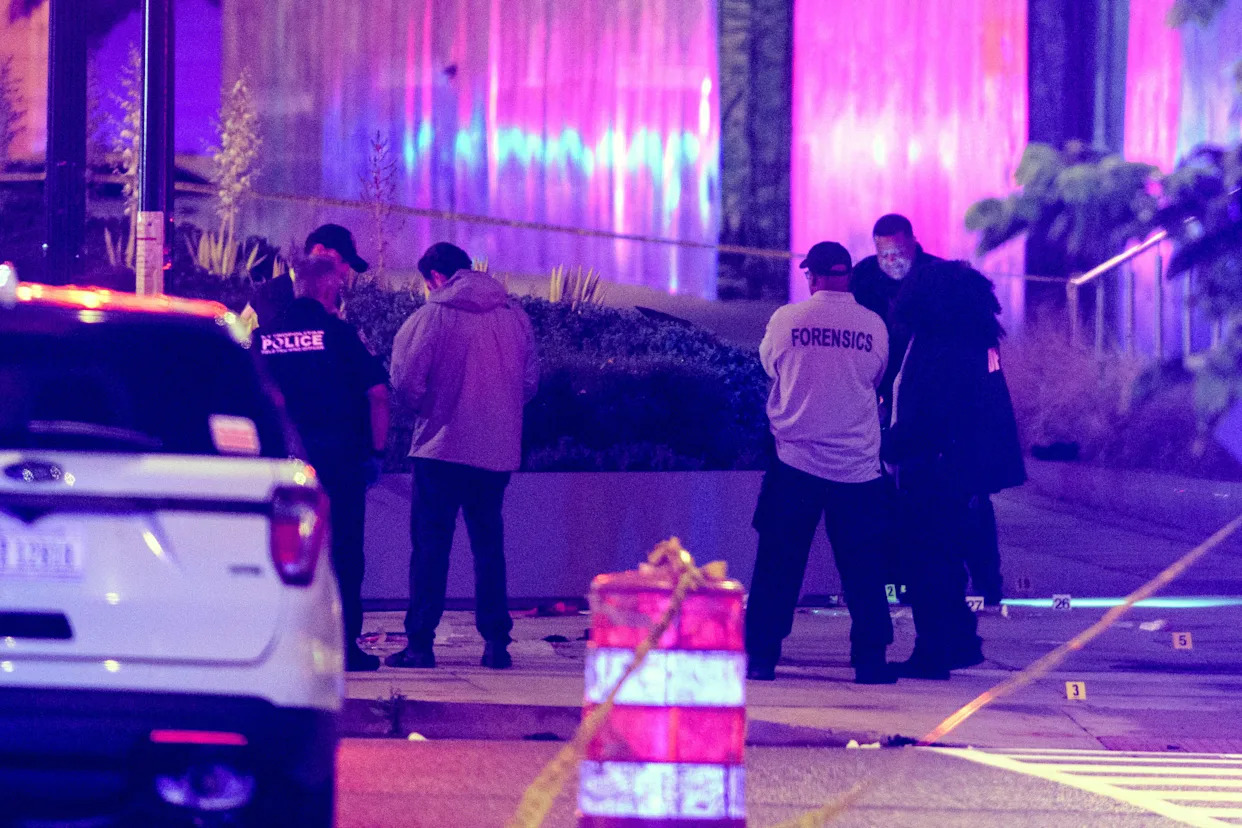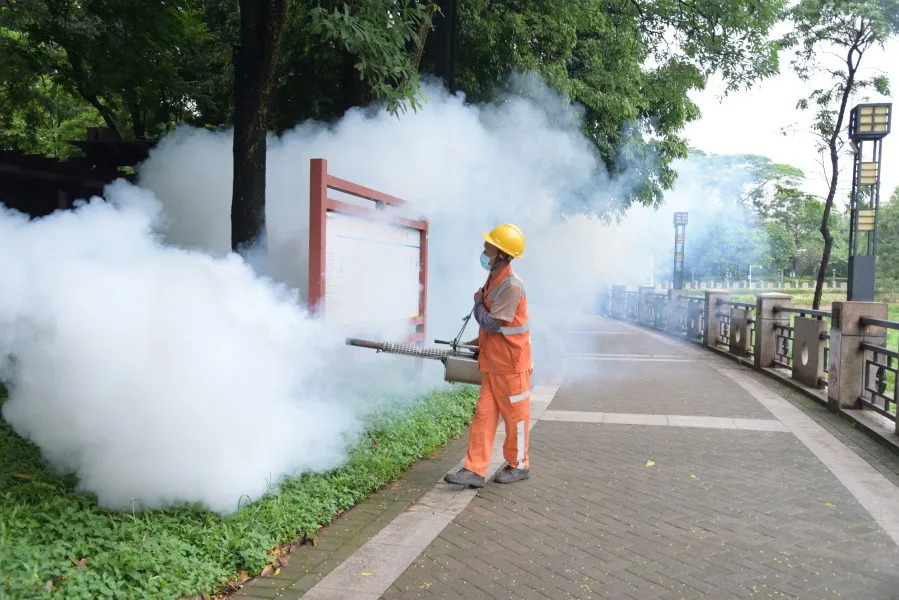
Russia has launched a new bid to exert control over the southern Ukrainian city of Kherson by threatening key access roads with its drones and trying to split it in two by striking a vital bridge.
On Sunday, a wave of airstrikes damaged a key bridge between Kherson’s island, Korabel, and the main city, sparking a widespread effort to evacuate the estimated 1,800 Ukrainian civilians who still live there. Russian forces appear not to have targeted the evacuation effort over the past three days, according to locals and rescuers, a rare moment of respite from the daily barbaric drone strikes on civilians across the city of recent months. Later Wednesday, videos posted online showed significant Russian strikes had resumed near the bridge and on the island, where some Ukrainain military are also thought to be based.
Russian military bloggers have also warned Kherson residents the main access road to the city, from the north, would now be targeted by longer-range drones. It was unclear how impactful the threats had been Wednesday when CNN witnessed traveling along the road significant freight and civilian traffic, including a large group of cyclists, at times protected by netting hung above the asphalt to block drones.
The capture of Kherson city and region – seized in the opening days of the war and then freed by a swift Ukrainian counter-offensive in November 2022 – remains one of Russian President Vladimir Putin’s main goals for the conflict, and the renewed pressure to separate Korabel from the rest of the city has raised concerns Russian forces might seek to bombard and then land upon the flat terrain in the weeks ahead.
Evacuations from Korabel continued Wednesday, with rescuers telling CNN of calm when they collected some of the 925 people removed by the end of the day from the island. Shelling continued apace on the peninsula, locals reported, but drones appeared to leave the evacuation convoys alone. Exhausted locals wept both relief and anxiety for their future when they reached an aid point.
Nadiya, sat in the back of the armored van that whisked her out, said: “They are hitting so hard since the morning. When is all of this going to be over? We already went crazy from all of this. When will they ever come to their senses? Causing such horror, killing everyone for the ‘peace’?” She said drones had been “whizzing” that day, but not reached her area. “We are already tired of this. When Trump is going to come, or someone … we don’t deserve such old age year as we have here.” She said she had heard of the deadline set by US President Donald Trump for a peace deal with Russia, but it had changed nothing for her.
Most of the elderly evacuees had been promised lodging elsewhere in the city, but had few other options. Nina, 85, was exhausted in the 35 degree Celsius (95 degree Fahrenheit) heat, grasping her crutch, already separated from her bags by rescuers. “There is no plan, I will live where they put me,” she said. “I am on one leg. I am so tired of this shooting that my nerves can’t take it anymore.”
Local Ukrainian officials stressed any Russian pause in drone attacks on the evacuation convoy paled into insignificance after months of repeated strikes on civilian targets.
“They absolutely do not care what the targets are,” said Yaroslav Shanko, head of Kherson city military administration. “Talking about any humanity from the Russians is absolutely pointless. Strikes on the community and the city are constant.”
Civilians are regularly hunted by Russian drones, whose operators flaunt their ruthless strikes in online posts. Kherson’s main hospital contained 25 patients from shelling or drone injuries, three new that morning and another two that afternoon, according to health workers there.
Oleh, 62, was hit at 4 a.m. Wednesday when he ran outside to help after a drone strike set fire to his neighbors’ home. Then another “double-tap” drone attacked. He fell backwards over a fence, but his legs dangled over its top, protecting his torso and not his legs. Ankle bandages hid the shrapnel damage to his feet.
“It’s dangerous there, you have to listen carefully,” Oleh said of detecting drones. “A double tap. That’s how they operate. They destroy a house, it burns. A minute later, another one comes, checking whether the house is burning or someone is trying to extinguish it. And then they kill and destroy further.”
Oleh is one of many patients who live alone and cannot quickly be released from hospital as he is unable to walk, swelling occupancy on the ward. Three drones hovered over the facility during CNN’s visit, according to local officials. The crackle of gunfire and the buzz of their engines carried through the hospital’s window netting.
For more CNN news and newsletters create an account at CNN.com





Comments